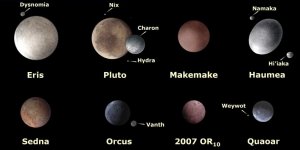| News / Space News |
Mars Rover's Weather Data Bolster Case for Brine
NASA | APRIL 14, 2015
Martian weather and soil conditions that NASA's Curiosity rover has measured, together with a type of salt found in Martian soil, could put liquid brine in the soil at night.

The Rover Environmental Monitoring Station (REMS) on NASA's Curiosity Mars rover. Image credit: NASA/JPL-Caltech/MSSS
Perchlorate identified in Martian soil by the Curiosity mission, has properties of absorbing water vapor from the atmosphere and lowering the freezing temperature of water. This has been proposed for years as a mechanism for possible existence of transient liquid brines at higher latitudes on modern Mars, despite the Red Planet's cold and dry conditions.
New calculations were based on more than a full Mars year of temperature and humidity measurements by Curiosity. They indicate that conditions at the rover's near-equatorial location were favorable for small quantities of brine to form during some nights throughout the year, drying out again after sunrise. Conditions should be even more favorable at higher latitudes, where colder temperatures and more water vapor can result in higher relative humidity more often.
YOU MAY ALSO LIKE



